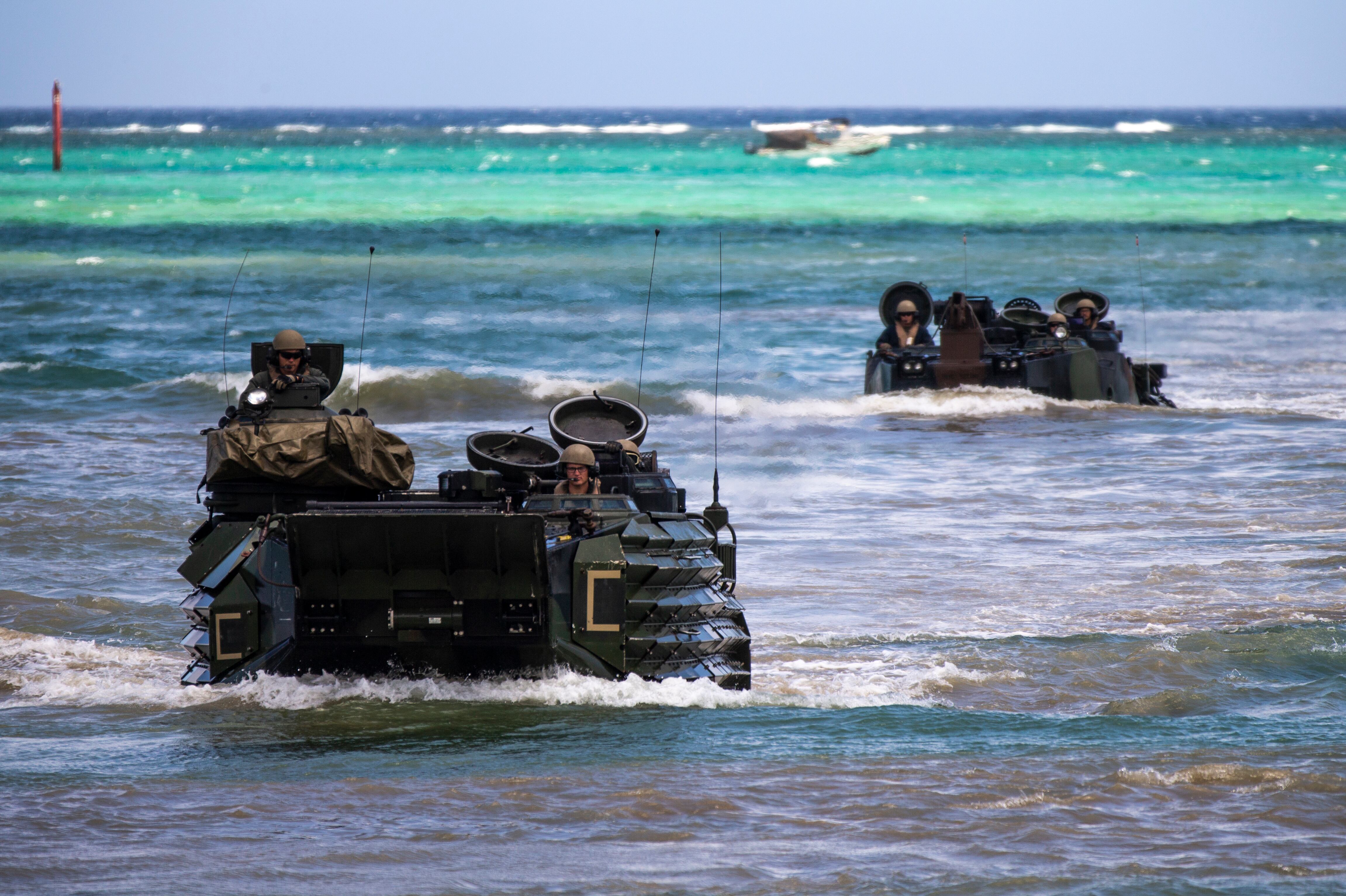A Marine Corps panel convenes Tuesday to decide if an officer should be discharged over the sinking of an amphibious assault vehicle in the ocean off Southern California that killed nine service members.
Lt. Col. Michael J. Regner was relieved of command of the landing team of the 1st Battalion, 4th Marine Regiment, 15th Marine Expeditionary Unit, shortly after the mishap off the coast of San Clemente Island on July 30, 2020. A Marine Corps statement at the time said his removal was based on “a substantial amount of information and data” and cited a loss of trust.
If the Board of Inquiry, composed of three officers, determines Regner should be discharged, he could potentially lose retirement benefits and privileges. The hearing is expected to run up to four days.
A Marine Corps investigation found that inadequate training, shabby maintenance and poor judgment by leaders led to the sinking of a seafaring tank in one of the deadliest Marine training accidents in decades.
RELATED

The amphibious assault vehicle had 16 people aboard when it sank rapidly in 385 feet (117 meters) of water. Seven Marines were rescued as the vessel was returning to a Navy ship on a training exercise.
The Marines use the vehicles to transport troops and their equipment from Navy ships to land. The armored vehicles outfitted with machine guns and grenade launchers look like tanks as they roll ashore for beach attacks, with Marines pouring out of them to take up positions.
Col. Christopher J. Bronzi, who supervised Regner, was relieved of command of the 15th Marine Expeditionary Unit last year.
The investigation found inadequate training of platoon members who were provided amphibious assault vehicles that had not been used in more than a year and were in “poor condition.” The platoon made repairs in a rush to meet a deadline, according to the investigation.
It took 45 minutes for the tank to sink and if the distress signal had been seen sooner, it’s likely rescuers could have saved the troops, the report stated. But there were no safety boats nearby.
As the water levels continued rising, the troops who had only trained on land remained inside the broken-down tank in seas that were rougher than expected, according to the findings.
They were not told to remove their helmets, weapons and other gear, which prevented them from being able to escape. Their life jackets also may have prevented them from removing their body armor and proved useless in keeping them afloat because of the weight, according to the investigation.
At least two of the troops had not completed their swimming certifications.
The emergency lights did not function and no markings were put on a side hatch, leaving troops scrambling in the dark, using their cell phone lights to find it, according to the findings.
Once they did, they struggled to open it, losing time. As they finally pried open the hatch, another assault vehicle came to rescue the crew and ended up colliding with the distressed vessel, which turned broadside into a wave that swept over it.
The troops were knocked off their feet and water flooded through the hatch and into the compartment, causing the vehicle to rapidly sink.





